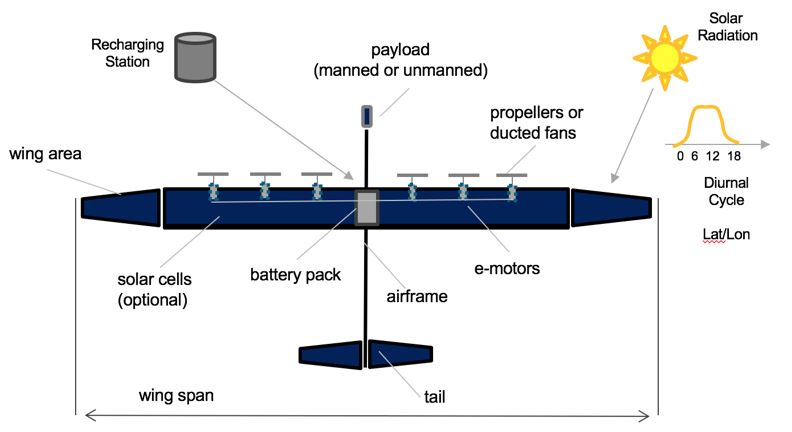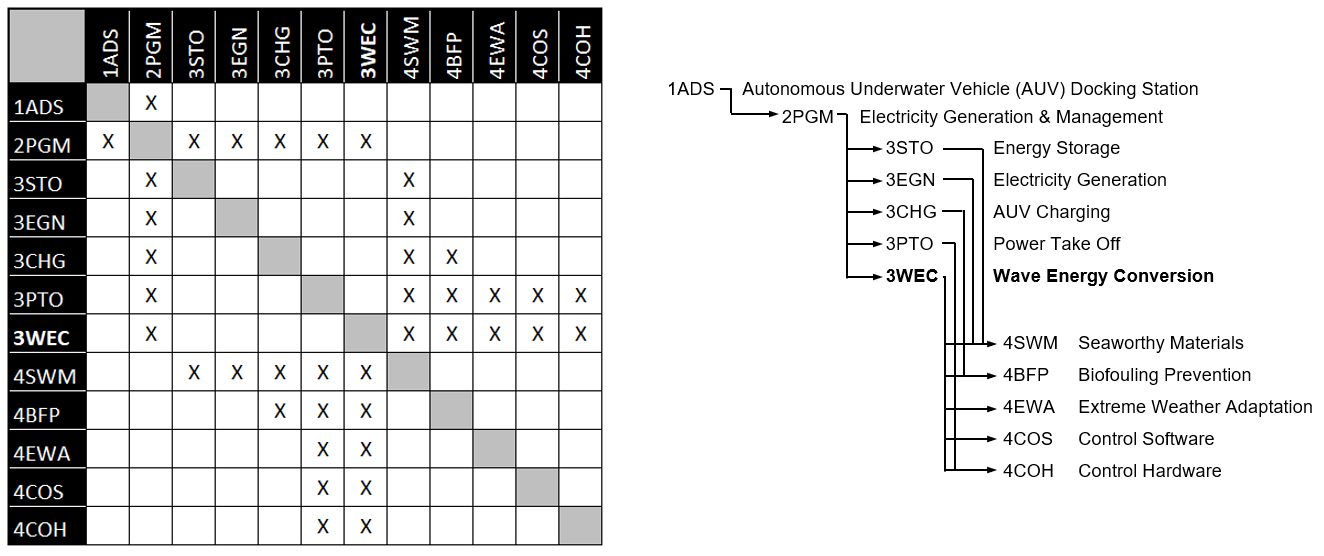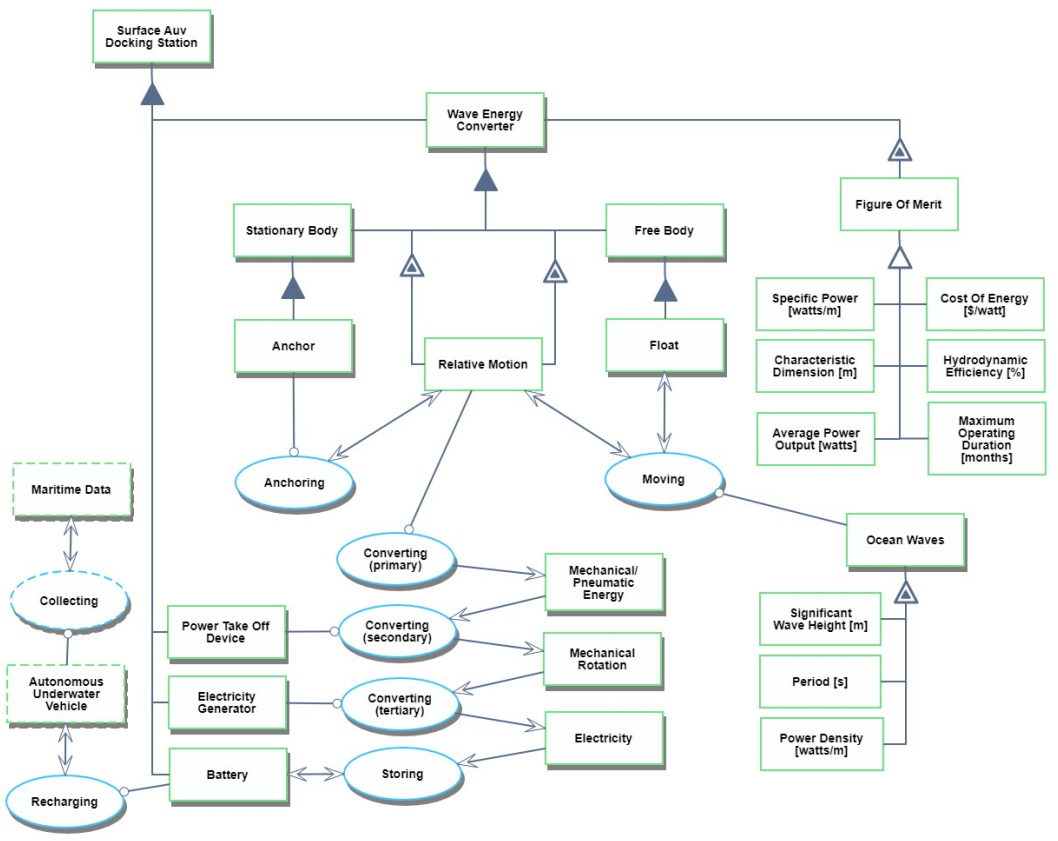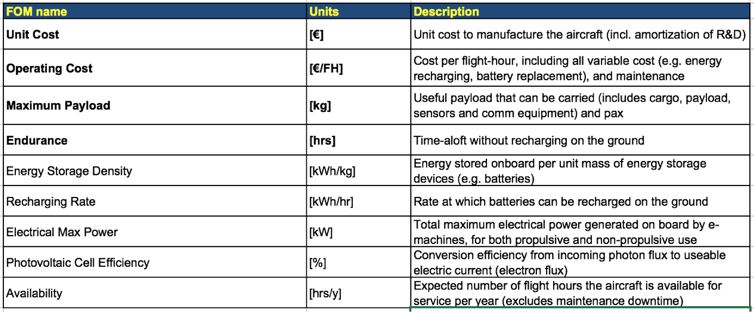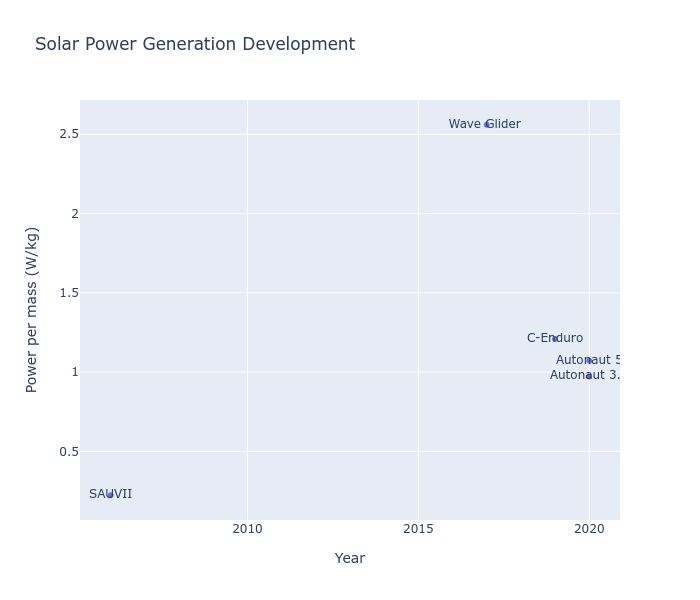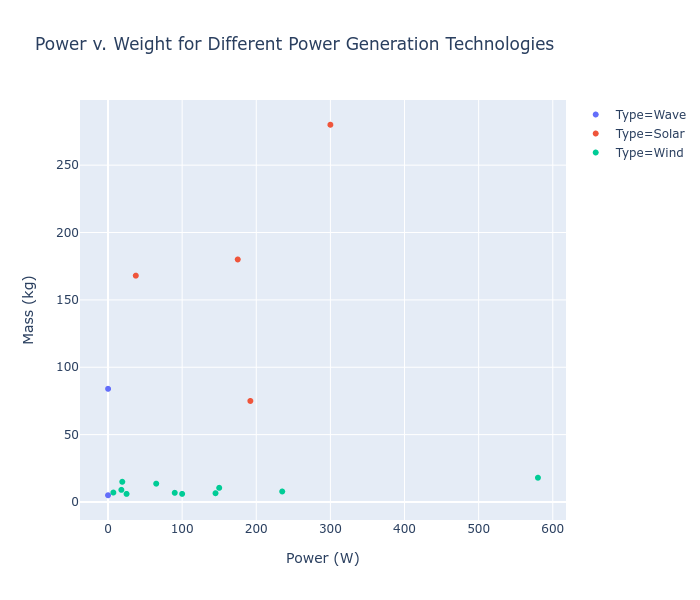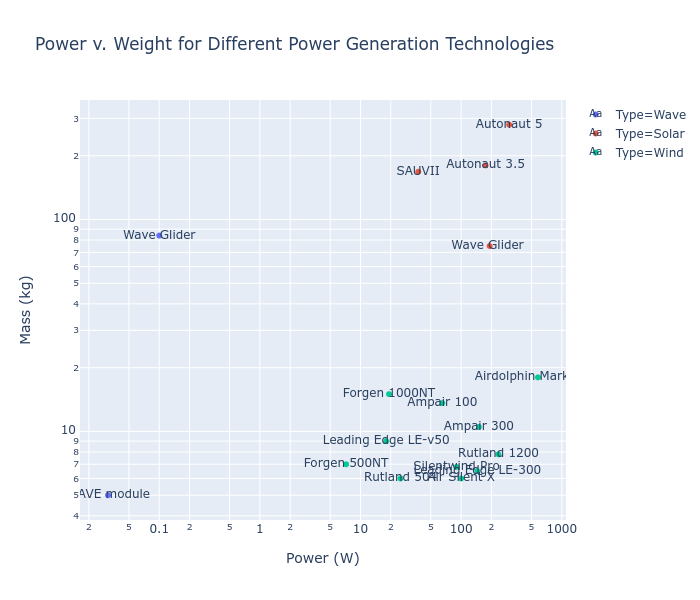Difference between revisions of "In-Situ Power Generation for AUVs"
| Line 25: | Line 25: | ||
The Object-Process Diagram (OPD) in the figure below shows how the 4GEN technology is related to the broader persistent AUV system. The diagram shows the AUV and its constituent subsystems including the power subsystem, which consists of an energy conversion device that is the physical embodiment of 4GEN technology. As is shown in the diagram, 4GEN technology acts as the instrument that converts environmental thermal, wave, wind, and solar energy into usable energy that is used by the AUV to power its subsystems. The figure also depicts the maritime data collection function, which is the primary purpose of the AUV. Figures of merit (FOM) characterizing the energy generation technology are also shown. | The Object-Process Diagram (OPD) in the figure below shows how the 4GEN technology is related to the broader persistent AUV system. The diagram shows the AUV and its constituent subsystems including the power subsystem, which consists of an energy conversion device that is the physical embodiment of 4GEN technology. As is shown in the diagram, 4GEN technology acts as the instrument that converts environmental thermal, wave, wind, and solar energy into usable energy that is used by the AUV to power its subsystems. The figure also depicts the maritime data collection function, which is the primary purpose of the AUV. Figures of merit (FOM) characterizing the energy generation technology are also shown. | ||
[[File: | [[File:AUV OPD.png]] | ||
An Object-Process Language (OPL) associated with the OPD is auto-generated and is shown below. It reflects the same content as the previous figure in narrative form. | An Object-Process Language (OPL) associated with the OPD is auto-generated and is shown below. It reflects the same content as the previous figure in narrative form. | ||
[[File: | [[File:AUV OPL.png]] | ||
==Figures of Merit== | ==Figures of Merit== | ||
Revision as of 21:44, 30 September 2020
Technology Roadmap Sections and Deliverables
This is a technology roadmap for:
- 4GEN - In-Situ Power Generation
This is a “Level 4” roadmap, indicating that it addresses a technology at the subsystem component level. Higher level roadmaps related to this subject would address technology progression at the market level (Ocean Exploration), product level (AUV), and subsystem level (Power System).
Roadmap Overview
The working principle and architecture of solar-electric aircraft is depicted in the below.
Solar-electric aircraft are built from light-weight materials such as wood or carbon-fiber reinforced polymers (CFRP) and harvest solar energy through the photoelectric effect by bonding thin film solar cells to the surface of the main wings, and potentially the fuselage and empennage as well. The electrical energy harvested during the day is then stored in on-board chemical batteries (e.g. Lithium-Ion, Lithium-Sulfur etc…) and used for propelling the aircraft at all times, including at night. For the system to work there needs to be an overproduction of energy during the day, so that the aircraft can use the stored energy to stay aloft at night. The flight altitude of about 60,000-70,000 feet is critical to stay above the clouds and not to interfere with commercial air traffic. Depending on the length of day, i.e. the diurnal cycle which determines the number of sunshine hours per day, which itself depends on the latitude and time-of-year (seasonality) the problem is easier or harder. The reference case in the technology roadmap is an equatorial mission (latitude = zero) with 12 hours of day and 12 hours of night.
Design Structure Matrix (DSM) Allocation
The 4GEN tree shown above reveals that in-situ power generation (4GEN) is an enabling technology for the power (3POW) and propulsion (3PRO) subsystems that, together with communication (3COM), navigation (3NAV), control (3CON), and payload (3PAY) subsystems, form the persistent AUV (2PAO) product. Enabling technologies for in-situ power generation are energy conversion technologies for wave (5WAV), thermal (5THE), solar (5SOL), and wind (5WIN) energy. 4GEN is a direct enabling technology for the propulsion subsystem because some forms of wave energy conversion allow direct conversion to propulsive force without the need for conversion to electrical energy.
Roadmap Model using OPM
The Object-Process Diagram (OPD) in the figure below shows how the 4GEN technology is related to the broader persistent AUV system. The diagram shows the AUV and its constituent subsystems including the power subsystem, which consists of an energy conversion device that is the physical embodiment of 4GEN technology. As is shown in the diagram, 4GEN technology acts as the instrument that converts environmental thermal, wave, wind, and solar energy into usable energy that is used by the AUV to power its subsystems. The figure also depicts the maritime data collection function, which is the primary purpose of the AUV. Figures of merit (FOM) characterizing the energy generation technology are also shown.
An Object-Process Language (OPL) associated with the OPD is auto-generated and is shown below. It reflects the same content as the previous figure in narrative form.
Figures of Merit
The table below show a list of FOMs by which solar electric aircraft can be assessed. The first four (shown in bold) are used to assess the aircraft itself. They are very similar to the FOMs that are used to compare traditional aircraft which are propelled by fossil fuels, the big difference being that 2SEA is essentially emissions free during flight operations. The other rows represent subordinated FOMs which impact the performance and cost of solar electric aircraft but are provided as outputs (primary FOMs) from lower level roadmaps at level 3 or level 4, see the DSM above.
Besides defining what the FOMs are, this section of the roadmap should also contain the FOM trends over time dFOM/dt as well as some of the key governing equations that underpin the technology. These governing equations can be derived from physics (or chemistry, biology ..) or they can be empirically derived from a multivariate regression model. The table below shows an example of a key governing equation governing (solar-) electric aircraft.
